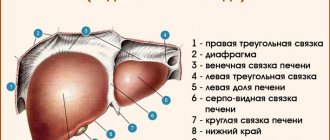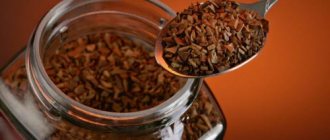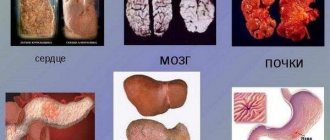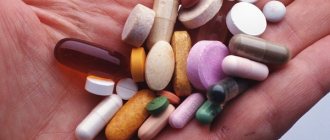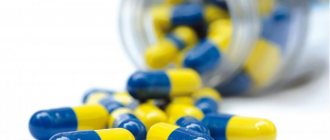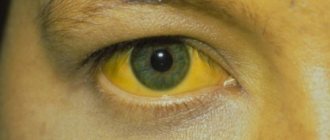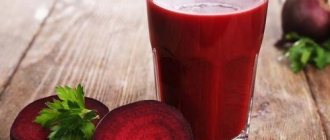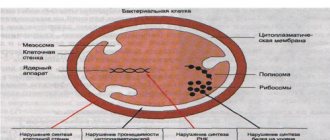Types of liver damage
The greatest toxic effect is exerted by drugs, namely antibiotics, the use of which is necessary in the treatment of chronic or acute bacterial infections or complications after viral diseases.
Consequences may appear as:
- hepatitis A;
- thrombosis of the hepatic and portal vein;
- fibrosis;
- cholestasis;
- idiosyncrasies;
- mixed reactions.
The negative impact of antibiotics on the liver is manifested by the development of:
- hepatocellular necrosis;
- hepatitis A;
- liver fibrosis;
- neoplastic reactions;
- vascular reactions with the formation of thrombosis of the portal and hepatic veins;
- idiosyncrasies;
- cholestasis;
- mixed types of lesions.
Prevention of liver diseases
It is important to keep in mind that if you have had liver disease before, antibiotics should be taken with caution. It is advisable to stop taking these medications, however, if this is not possible, it is necessary to minimize the negative effects.
Antibiotics have a significant effect on the liver. However, fortunately, modern methods of therapy can reduce the effects of the harmful effects of these drugs and cure the organ.
It has long been known that preventing any disease is much easier than curing it. However, most people take huge doses of antibiotics and only think about the liver when pain appears and their general health worsens.
Unfortunately, it is impossible to refuse antibacterial drugs to avoid their side effects. Various infections top the list of reasons for visiting a doctor, and most often it is impossible to get rid of them without antibiotics. However, the harmful effects of antibiotics on the liver can be significantly reduced.
Selection of medicine
Antibacterial agents vary in severity of side effects and liver toxicity. If there is a need to take such drugs, you should study the information about them in detail and check with your doctor.
Usually the specialist himself warns about possible negative consequences and selects a gentle treatment regimen. Often, good antibiotics are quite expensive, but attempts to save money and replace them with a cheap analogue can result in serious problems.
Selection of medicine
Diagnostics
The diagnosis is made using laboratory tests of liver enzymes: ALT, AST and alkaline phosphatase. An enzyme immunoassay may also be required to rule out viral hepatitis and the development of tumors.
For greater accuracy, ultrasound, CT, and tissue biopsy may be prescribed. Only after receiving all the results, the doctor begins to treat the patient.
If an organ has been damaged by taking medications, you need to take the utmost care in its further treatment.
To diagnose liver damage, changes in biochemical blood tests are important.
The diagnosis is made by excluding other causes of liver damage:
- viral or alcoholic hepatitis;
- primary cirrhosis of the liver;
- infectious diseases;
- helminthic infestation;
- oncology;
- pathology of the biliary tract;
- progression of cardiovascular failure.
As a rule, liver damage appears within one week to three months from the start of taking antibacterial drugs. For this reason, it is important to remember about the medications you are using and do not forget to tell your doctor about this fact at your appointment.
In a biochemical blood test, attention is drawn to an increase in liver enzymes: ALT, AST and alkaline phosphatase.
If, after detection of elevated laboratory values or the appearance of clinical symptoms, antibiotics are continued, then liver damage progresses.
In addition to performing a biochemical blood test, to carry out differential diagnosis with the above diseases, an enzyme-linked immunosorbent assay is performed to exclude viral hepatitis and tumor processes, as well as ultrasound, computed tomography, and a biopsy of liver tissue is taken.
Consequences of taking antibiotics
Entering the bloodstream from the gastrointestinal tract, the active ingredients of many antibacterial agents enter the liver, where they are metabolized. The detoxification mechanism is launched: enzymes break down “harmful” compounds, glutathione and glucuronide bind them, and then excrete them in urine or bile.
Since the course of antibiotic therapy lasts at least a week on average, hepatocytes may not have time to synthesize the necessary substances. As a result, the following pathologies can develop:
- Drug-induced hepatitis, which is clinically no different from other types of this disease. The risk of its development is quite high already on the 5th day of taking antibiotics. When taking hepatoxic antimicrobial agents, whose metabolites are more toxic than the drug itself, reactive liver damage with severe necrosis and outcome in cirrhosis is possible.
- Stagnation of bile is caused mainly by drugs of the cephalosporin group. Externally it manifests itself as skin itching, and internal changes include an increase in the viscosity of bile, a deterioration in its outflow and inflammation of the ducts.
- Severe allergic reactions as a result of the accumulation of toxic decay products in the body, as well as disruption of healthy intestinal microflora.
After a long course of antibiotic therapy, patients often complain of a significant deterioration in health, headaches, nausea and weakness. Liver damage is manifested by dysbacteriosis, dermatitis, characteristic abdominal pain and a constant taste of bile in the mouth.
Read further: Causes and methods of eliminating bitterness in the mouth after taking antibiotics
Knowing how antibiotics can affect the liver, it is imperative to take preventive measures.
What are the ways of defeat?
The liver is an essential organ that suffers from many factors. One of which is cleansing the body of toxic and chemical substances that interfere with the normal functioning of systems.
There are a number of reasons why the organ should be restored:
- long-term medication use;
- excessive drug use;
- alcohol and smoking abuse;
- unhealthy food;
- stationary lifestyle.
All these reasons lead to the use of antibiotics, which forces a person to cleanse the liver of them.
The liver suffers from many factors. In addition to its normal daily functions, it additionally takes on the blow from all the toxic substances that a person thoughtlessly ingests. The reasons why it is necessary to restore its normal operation are mainly:
- taking antibiotics and other medications;
- excessive alcohol consumption;
- uncontrolled consumption of fatty, fried foods;
- sedentary lifestyle;
- elevated ambient temperature.
Stages of liver treatment
Treatment with medications should be prescribed by an experienced specialist, based on the results of tests and examinations.
Recovery from taking antibiotics can take quite a long time. Taking medications to help cope with infectious diseases is necessary, while antibiotics cause a serious blow to the liver.
A systematic approach, which includes following several effective methods, will help the liver recover quickly. First you need to stop taking the antibiotic that caused the problems, and then reconsider your diet and consult a doctor.
Food
You should adhere to a certain drinking regime and follow a dietary diet. The restoration of the liver will be facilitated by a certain type of diet prescribed by a doctor, but with any of them, proper cleaning of the organ must be provided.
To help the liver return to normal after taking medications, you should completely avoid alcoholic beverages, spicy, smoked and fatty foods.
Make it a rule to steam food; when choosing between stewed or boiled dishes, it is better to choose the latter. Use salt in moderation and eat plenty of fruits and vegetables.
As we have already noted, taking medications that help protect and restore the liver should be started during antibiotic treatment. But it is worth noting that the work after this type of therapy will be much more labor-intensive and more difficult.
Firstly, you will need to follow a special diet so as not to create additional stress on the liver or worsen its condition. Secondly, one of the mandatory conditions is to stop drinking alcohol and smoking.
After all, all this will aggravate the situation. Therefore, the patient is advised to have a healthy lifestyle.
In order to restore liver cells after antibiotics, you should eat right. It is recommended to consume products that do not contain preservatives, dyes, or other harmful substances.
It is best to include fruits, vegetables, dill, parsley and other herbs, fermented milk products (cottage cheese, curdled milk, kefir) in your diet. Fish, meat (their low-fat varieties), beans, and various types of cereals have a good effect on the liver and the body as a whole.
Proper nutrition involves limiting the amount of confectionery and bakery products consumed. Daily walks in the fresh air will help restore your health, so you need to get out of the house more often.
How to cure the liver after antibiotic therapy?
To restore the liver, medications called hepatoprotectors are used. They are divided into several main groups. These are the following groups:
- amino acids;
- preparations of plant and animal origin;
- vitamins that act as antioxidants;
- preparations containing phospholipids (to strengthen the liver walls).
Before deciding how to restore the liver after antibiotics, it is necessary to find out in advance, as soon as it becomes known that they will be taken for a long time, the correct dosages and the need to take them.
Even during the course of medication, special drugs are used to reduce the negative effects of antibiotics. But the hardest and most lengthy work comes after you finish taking the medications.
Liver treatment includes the following procedures:
- strict diet;
- use of medicines, preferably of herbal origin;
- quitting smoking and alcohol;
- maintaining an active lifestyle.
In the process of treating the liver, first of all, it is necessary to follow a diet and eat right. The diet should be dominated by natural and protein foods: vegetables, herbs, lean meats and fish.
Food should be rich in vitamins and carbohydrates. Eating fatty and fried foods should be avoided, since such foods are very difficult for the body and contain many carcinogens that destroy the liver.
It will be very useful to consume fermented milk products, cereals and legumes. But it is better to get carbohydrates from sweet fruits and berries than from sweets and baked goods.
Drugs designed to help restore the liver are called hepatoprotectors. They are divided into the following groups:
- vegetable;
- animal origin;
- with the presence of phospholipids (strengthens the liver walls);
- amino acids;
- antioxidant vitamins.
How to protect your liver?
If it is not possible to avoid the use of antibiotics, it is worth following some recommendations. Such a concept as antibiotics and the liver is incompatible. So, first of all, taking antibiotics should be rational, only as prescribed by a doctor. Self-prescription of this group of drugs is strictly prohibited. For viral diseases, HIV, antibiotics are not used.
Further, in combination with antibiotics, the doctor must prescribe drugs that protect the intestinal microflora and liver. So, to protect the intestinal tract, antifungal agents and beneficial bacteria are used:
- Sporaxol;
- Futsis;
- Sporogal;
- Linux;
- Lactovit;
- Acylact;
- Florin.
To protect the liver, experts prescribe hepatoprotectors. These funds are aimed at protecting hepatocytes and restoring them. So, liver function will not be impaired. Many of the hepatoprotectors are made based exclusively on plant components. Essential phospholipids, amino acids, and animal-based products are very popular. Doctors most often prescribe Karsil, Essentiale, Galstena, Phosphogliv, Essliver, Heptral, Hepasol Neo, Remaxol.
By following all the recommendations of a specialist, you can avoid serious consequences. Many patients believe that taking additional funds is just an extra financial expense. But, after finishing the course of antibiotics, complications will make themselves felt. Then you will have to treat the new disease, restore immunity and liver function.
Balneotherapy
Balneotherapy is the most affordable, effective, fastest way to cleanse and rehabilitate after a course of medications. To put it simply, it is cleansing with mineral water. You should also not buy all mineral water, but only the following brands:
- Slavyanovskaya.
- Mirgorodskaya.
- Essentuki No. 17.
- Essentuki No. 4.
- Truskavetskaya.
- Berezovskaya.
- Borjomi.
Before drinking mineral water, all gases must be released from it. You need to take 150 ml, warmed 30 minutes before meals.
Each treatment method has contraindications. Balneotherapy is not recommended for diabetes mellitus, frequent bleeding, aneurysm, acute inflammatory infections, chronic inflammatory processes in the body.
Folk remedies for recovery
Folk remedies have always occupied one of the leading positions in the treatment of many diseases; liver treatment after antibiotics is no exception. Of course, they will not replace treatment with medications, but will only complement it.
Cabbage salad is very good for cleansing from drugs containing antibiotics. To prepare it you need cabbage, orange, cranberries.
Chop all ingredients, keeping equal quantities. Stir and season with apple cider vinegar.
Add salt to taste, sprinkle with lemon juice, and add spices if desired. The salad must be eaten for two weeks, preferably with black or wholemeal bread.
If it is impossible to refuse to prevent taking these medications, you should think about how to reduce their negative impact on liver cells. Let's consider the main existing methods of protecting hepatocytes.
First of all, you should take medications correctly, that is, in cases where it is really necessary. It is important to know and remember that antibiotics cannot cure influenza, HIV and other similar viral infections.
Also, these drugs cannot cure uncomplicated forms of bacterial infections.
If a person takes such drugs when he has such problems, he will greatly disturb his microflora. Then you will need to carry out quite a long recovery of the liver.
The attending physician should prescribe medications such as probiotics (bifidobacteria, lactobacilli) and hepatoprotectors (functioning to protect the liver) to a sick person taking antibiotics.
Such methods are essential to protect the patient's body. Each patient is obliged to comply with all doctor’s prescriptions and not self-medicate.
Another method of recovery, in addition to a mandatory diet after taking antibiotics, is the use of special medications - herbal remedies. These include hepatoprotectors, which have a restorative effect on organ cells, protect against toxic substances, and have an antioxidant effect.
They are usually made from milk thistle extract, artichoke, and pumpkin seed oil. You need to drink them for quite a long time - at least 2 months.
Among the drugs that promote the restoration of liver cells, the following groups are distinguished:
- Preparations with milk thistle and other medicinal herbs: Gepabene, Karsil, Silibor, Liv 52, Ovesol, Chofitol, Galstena. They have excellent antioxidant effects and stabilize cell membranes.
- Preparations with ursodeoxycholic acid: Ursosan, Urdoxa, Ursofalk. This type of medicine protects cell membranes, reduces inflammatory activity, stimulates cellular immunity and has a choleretic effect.
- Preparations with essential phospholipids: Essentiale Forte, Esliver Forte, Phosphogliv, Rezalut Pro. These medications promote regeneration and the production of new cells and have an antifibrotic effect.
Traditional recipes are also used successfully to restore the liver after antibiotics. However, they do not replace drug treatments, but are only a supplement to them.
Recipe 1. Take milk thistle, chicory, and corn silk in equal parts. 2 tbsp. l. Mix the finished mixture with 200 ml of boiling water, leave the broth overnight, and the next morning strain and drink before meals.
Recipe 2. Take St. John's wort, chicory and calendula flowers in equal parts. 1 tbsp. l. Mix the mixture with 200 ml of boiling water, leave the broth overnight, and boil it in the morning and drink throughout the day.
Recipe 3. Pour 500 ml of boiling water over any parts of chicory, let simmer for 15 minutes, strain and add lemon and honey. Drink like tea.
Antibacterial drugs can have a negative effect on organs, which causes the development of the following complications:
- Increased body temperature.
- Joint pain.
- Dermatitis.
- Enlarged spleen.
- Liver damage.
- Dysbacteriosis.
- Allergic reactions: rhinitis, tracheitis, skin reactions (redness, blisters), Quincke's edema, as well as anaphylactic shock and serum sickness.
Manifestations of anaphylactic shock: sudden loss of strength, shortness of breath, sticky cold sweat, drop in blood pressure, pale skin to cyanosis, vomiting, swelling of the mucous membranes, loss of consciousness and, in severe cases, death. All symptoms develop at lightning speed, medical assistance should be provided immediately.
Serum sickness is a reaction to the introduction of foreign animal protein into the body. It can also be caused by insect bites and medications such as antibiotics.
This condition is characterized by fever, the appearance of a rash, aches in various joints and muscles, headaches, gastrointestinal upset, enlarged lymph nodes, etc.
In addition to the side effects of antibiotics, there are toxic reactions that usually appear after long-term treatment with large doses of antimicrobial drugs. They are associated with the effects of antibiotics or their breakdown products on a specific organ or organ system.
In addition, toxic reactions can develop due to a violation of the enzyme function of the body, due to which the drug accumulates in the tissues.
The liver is the main filter of the human body
Sometimes liver problems do not manifest themselves at all. And only after a certain period of time, diseases of the gland will make themselves felt. To avoid possible further complications, the doctor may recommend taking a biochemical blood test after completing a course of antibiotics. Liver restoration can occur in several ways.
Herbal medicines are most often used to restore the liver. Hepatoprotectors are prescribed for both protection and recovery. The products protect liver cells from toxic effects and promote their rapid regeneration. Many of them are based on milk thistle extract, pumpkin seed oil, and artichoke. The course of liver treatment after antibiotics lasts at least 2 months.
Medicines for the liver with milk thistle have the following names:
- Galstena;
- Chophytol;
- Liv 52;
- Karsil;
- Ovesol;
- Silibor.
These drugs protect cell membranes well and quickly rid the liver of toxins. No less popular and effective are essential phospholipids - Essentiale, Phosphogliv, Rezalut Pro. With the use of such hepatoprotoctors, the production of completely new healthy liver cells is observed.
Food
To restore the liver after antibiotics, it is very important to monitor your diet. You will have to stick to a diet for some time. You definitely need to give up this diet: Fatty, spicy foods, fried foods, alcohol, smoked foods, various food additives. If you do not adhere to a diet and take medications, they will not be beneficial. It is necessary to exclude factors that lead to the destruction of liver cells.
To cleanse the liver after antibiotics, you must follow a drinking regime. Drinking mineral water is very beneficial. This therapy is best carried out in special sanatoriums. It is worth noting that for drinking it is necessary to use warm mineral water, releasing gases from it. You can drink water from Borjomi, Essentuki No. 4, Essentuki No. 17. Simple green tea also has benefits.
As for food, the diet includes the following foods:
- Light broths from chicken and beef bones;
- Pike perch, cod, squid;
- Buckwheat and oatmeal;
- Oats, wheat, soybeans;
- Yeast-free rye bread;
- Fermented milk products;
- New milk;
- Asparagus, carrots, beets, pumpkin, cabbage, artichoke;
- Lingonberries, cranberries, black currants;
- Dried fruits;
- Nuts;
- Honey;
- Olive, linseed oil;
- Eggs;
- Garlic.
ethnoscience
Popular recommendations are effective in restoring the liver after antibiotics. It is tasty and healthy to eat a mixture of cranberries and honey. The ingredients are taken in equal quantities. Take one tablespoon 20-30 minutes before meals three times a day. The drug can be mixed with warm water and drunk.
It is very useful to eat boiled or baked pumpkin every day. Vegetable juices are highly effective: pumpkin, beet, carrot, cabbage. You can prepare the following herbal mixture:
- Milk thistle;
- Corn silk;
- Chicory;
- St. John's wort.
All components are taken in equal parts and mixed thoroughly. 2 tablespoons of the mixture are poured into a glass of boiling water and left overnight to infuse. In the morning, the product should be strained and drunk in the morning before breakfast. In general, if you take drugs to protect the liver along with antibiotics, there will be no decrease in the functionality of the organ.
The liver is an unpaired organ that is located at the top of the abdominal cavity on the right. It is involved in the digestion process, cleansing the body of toxins, metabolism, removing waste products, and filters the blood.
When damaged, the organ begins to work incorrectly, not at full strength. Drug intoxication accounts for about 30% of liver diseases - alarming symptoms do not bother every person who is being treated with antibiotics, but one third is a high figure.
Risk factors:
- Elderly age;
- Taking several medications at once;
- Incompatibility of drugs;
- Bad genetics;
- Drinking alcohol during treatment;
- Presence of acute and chronic liver diseases.
The most aggressive and dangerous for the liver are tetracycline antibiotics.
Some people experience severe liver pain from taking pills, while others physically tolerate the treatment process normally, but this does not mean that there are no side effects. Among the negative consequences after treatment with antibiotics are:
- Aches, joint pain;
- Dermatitis, skin rashes;
- Significant increase in body temperature;
- Liver damage;
- Development of dysbacteriosis;
- Enlargement of the spleen.
In addition to these phenomena, allergic reactions can develop (up to anaphylactic shock, angioedema), serum sickness (is a reaction to the ingestion of a foreign protein of animal origin), toxic reactions (symptoms are the same as for other types of poisoning, or specific).
The toxic effect of antibiotics is manifested:
- Damage to the nervous system, in some cases accompanied by neuritis of the auditory canal nerve;
- Inhibition of hematopoiesis, development of anemia;
- Necrosis of soft tissues when the drug is administered by injection (local reaction);
- Damage to internal organs and body systems;
- Damage to the fetus during intrauterine development (in areas of special danger, skeleton, kidneys, organs of the auditory system, teeth).
Rarely, nosocomial infections and so-called therapeutic shock can develop. In many ways, the reaction to taking antibiotics depends on the group of the drug and the individual characteristics of the patient’s body.
Antibiotic drugs are prescribed to treat bacterial infections if the body is weakened and cannot fight the disease itself. There are entire algorithms for treating adults and children with these medications.
It is highly advisable to first pass a test for sensitivity to the active components of a certain group of drugs - based on its results, it will be possible to prescribe treatment with guaranteed effectiveness. If you follow the doctor's instructions, the risks of complications are minimal, but much depends on the drug and the initial condition of the liver.
An organ can be affected in different ways. Basic:
- Direct toxic effect on the cellular structures of the antibiotic;
- Toxic effects of drug metabolites;
- Immune response to tissue damage.
As a result, fibrosis, hepatitis, neoplastic reactions, necrosis, vascular pathologies, cholestasis, and mixed lesions can develop. These are quite dangerous conditions that require medical intervention.
The sooner liver restoration begins after antibiotic treatment, the better results will be achieved.
To accurately diagnose liver damage, it is necessary to track changes occurring in the biochemical composition of the blood. To begin with, the doctor excludes possible causes of the disease - these are helminthic infestations, infections, cirrhosis, hepatitis, diseases of the biliary tract, malignant tumors, progression of heart failure.
Liver damage occurs between 7 and 90 days after the start of antibiotic therapy, so it is important for the patient to remember what and when he drank in order to provide the doctor with complete information if necessary.
Liver damage after antibiotics in a biochemical blood test is indicated by increased values of alkaline phosphatase, AST, ALT. Once clinical symptoms appear and a negative test is obtained, antibiotics can be stopped. As it continues, symptoms progress.
It is mandatory to perform a differential enzyme immunoassay to exclude other diseases. An accurate diagnosis will make recovery quick, effective, and save the patient’s time and money.
Let's look at all the ways you can restore your liver after antibiotics. They can be used individually or in combination. The diet is recommended for everyone, without exception, because it reduces the load on the organ, cleanses the body, and makes the recovery process as fast and effective as possible.
Correction of nutrition is mandatory, since the organ is already under significant stress - you should not aggravate it with fatty foods, carbonated drinks, or alcohol. You will also have to give up everything fried, smoked, spicy and salty. The “5 table” food system or another similar one is ideal.
Products will need to be boiled, baked, steamed. You can eat salt, but in minimal quantities. The bulk of the diet during rehabilitation therapy should consist of cereals, fruits and vegetables. Minor deviations are possible, although not desirable.
List of permitted products:
- Bone broths;
- Seafood;
- Porridge;
- Cereals;
- Bread without yeast;
- Nuts;
- Honey;
- Dried fruits;
- Sour berries;
- Dairy products.
Additionally, it is recommended to constantly drink mineral water. A course in a sanatorium is, of course, ideal, but home therapy also gives good results. The best types of mineral waters for restoring the liver are Essentuki (4, 17 rooms), Borjomi. It is recommended to release the gas first. The water should be warm - this way the effect will be better.
In addition to mineral water, you can drink green tea, herbal infusions, and neutral homemade juices (for example, tomato).
Medications are used to restore the liver after antibiotic therapy. The average course of treatment is 2 months. The main group of medicines are hepatoprotectors and phytoformulas. They remove toxins and restore normal functioning of the organ.
The main active ingredients are artichoke, pumpkin seed oil, milk thistle. The effect will be long-lasting, but not quick - be prepared for a long recovery.
The main groups of drugs used to restore the liver:
- Cell membrane enhancers, antioxidants – Karsil, Silibor, Ovesol, Gepabene;
- Restorers of organ cellular structures - Esliver, Essentiale, Phosphogliv. Additionally, these drugs prevent the development of fibrosis;
- Immunity restorers that accelerate the flow of bile, stop inflammation, protect cell membranes - Urdoxa, Ursosan, Ursofalk.
Traditional recipes for liver restoration
Folk remedies are most often resorted to when they decide to restore the liver after taking antibiotics. This is due to the fact that the recipes contain natural products of plant origin, which are completely harmless.
The first recipe. To prepare the medicine, select a medium-sized ripe pumpkin.
The top is cut off and the seeds are removed through the resulting hole. Next, you need to pour honey into the pumpkin to the very top and cover with the cut part on top.
For a better result, you can fix the top with unleavened dough so that air does not get inside. Let it brew for 10 days in a place protected from light.
The medicine should be taken one tablespoon three times a day, half an hour before meals. After the honey runs out, you need to take a break for two months and then repeat the course.
This recipe is used not only to restore the liver, but also to treat cirrhosis.
Proper nutrition and diet
For any disease, as well as for its restoration and cleansing from antibiotics, it is necessary to adhere to a strict diet. It will not be possible to get by only with medications and folk remedies; all treatment must be comprehensive, that is, include all available means for cleansing the organ after a course of medications.
To cleanse the liver, you must first get rid of the factors that pollute it. That is, set up proper nutrition.
Proper nutrition includes:
- complete abstinence from alcoholic beverages;
- to give up smoking;
- refusal of fried and smoked foods;
- Do not eat fatty or spicy foods;
- You cannot add nutritional supplements to your diet;
- give up fast food products.
Taking the most effective medications will not help get rid of the disease, neglecting the factor of proper nutrition.
List of products that help quickly cleanse the body of drugs called antibiotics:
- warm mineral water;
- honey with nuts;
- olive or flaxseed vegetable oil;
- buckwheat and oatmeal porridge;
- boiled seafood;
- fermented milk products and fresh milk;
- Rye bread;
- dried fruits;
- fruits and vegetables;
- light chicken broths;
- garlic;
- eggs.
Following a diet is very important, but you should keep in mind that you do not need to completely limit yourself in food. Overeating is also bad for the organ.
Effect of antibiotics on the liver
When taking these medications, our exocrine gland, the liver, experiences a tremendous impact.
Inhibition of hematopoietic function; Weakening of the barrier function (the liver is not able to process a large number of toxins after the death of harmful microorganisms); Disorderly release of bile; Poor glycogen accumulation; Lack of synthesized proteins, fats and carbohydrates.
In this case, there is a threat of an allergic reaction of the body (slagging of the liver after antibiotics can lead to Anaphylactic shock), as well as the threat of infection of a weakened organ with parasitic pathogens and, in severe cases, liver failure.
Allergy to antibiotics
In cases where the symptoms of illness are not very pronounced, many people do not listen to the body’s signals for help and do not think about the sad consequences after a dose of antibiotics. Therefore, it is necessary to remind how to protect the liver from antibiotics, warn about the side effects of these drugs and offer a system for supporting and restoring the gland and the body as a whole.
If a dose of an antibiotic is prescribed (only a doctor should do this), then it is advisable to make sure of its necessity, the effectiveness of treatment, side effects, and also take into account the condition of your liver at the beginning of taking it.
As a result of consulting a doctor, you can get the right to choose a treatment regimen, either alternative therapy (restoration with natural antibacterial agents: onions, black pepper, garlic, decoctions and tinctures of medicinal plants), or the need for treatment with synthetic antibiotics.
Long-term use of medications, as well as violation of the recommendations of the attending physician, can lead to disastrous outcomes. As a result, patients turn to medical specialists with complaints that their liver hurts after antibiotics, their temperature often rises, they experience irritability, insomnia and other unpleasant symptoms.
Headache
- pain in the right hypochondrium;
- frequent headaches;
- diarrhea;
- hearing and vision impairment;
- loss of mood, dizziness;
- nausea, vomiting;
- dysfunction of the genitourinary system.
In addition, the overall health of the body worsens, the intestinal microflora is disrupted, and immunity decreases.
Despite the negative impact of antibiotics, their medicinal components saved many patients with liver cirrhosis, complex forms of hepatitis, alcohol-induced organ damage, diseases of the gallbladder and bile ducts.
After long-term treatment with antimicrobial drugs, it is still recommended to monitor the condition of the liver and keep the body in excellent condition through natural foods and vitamins.
